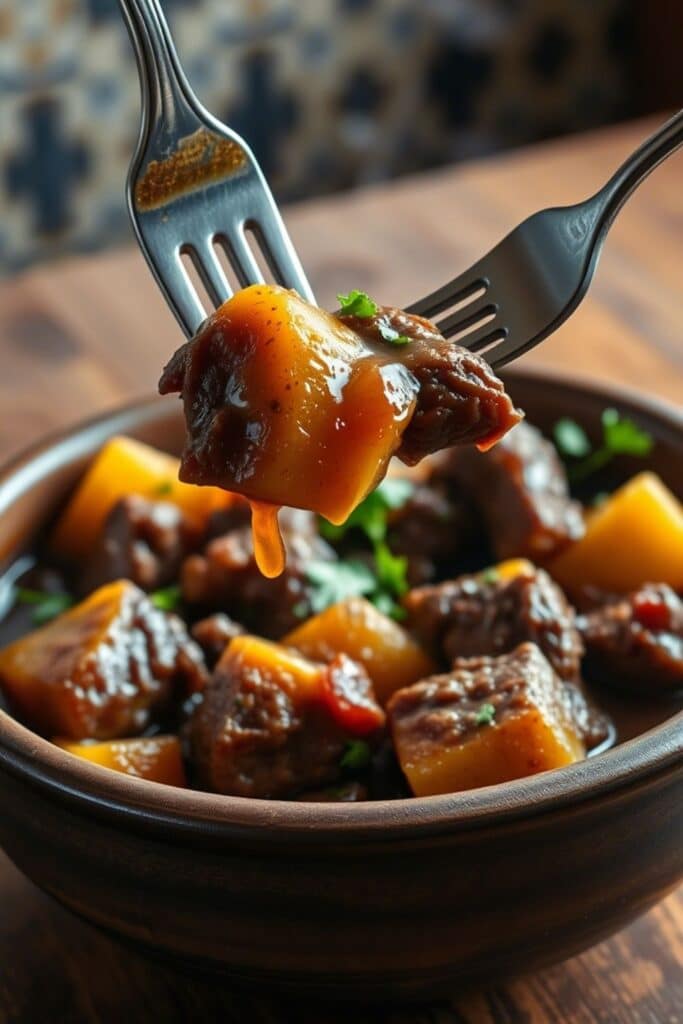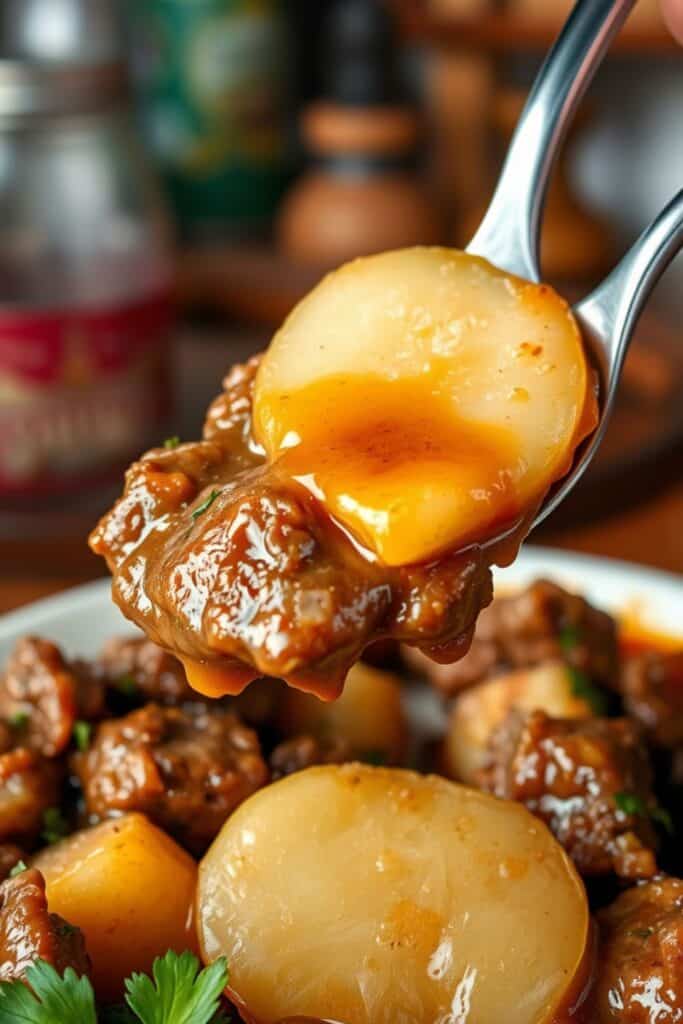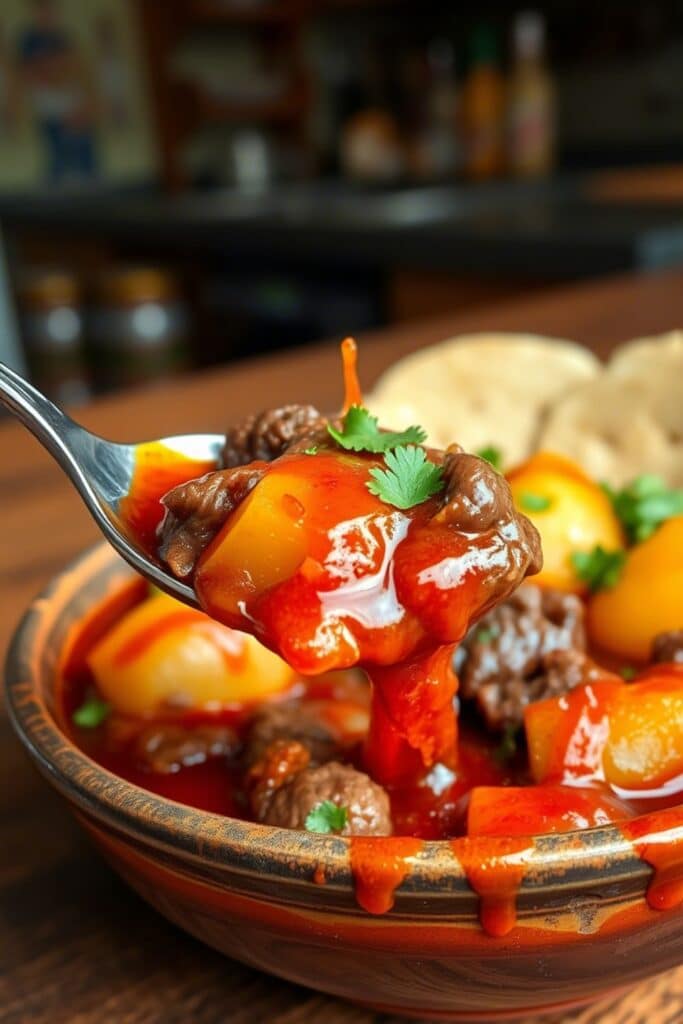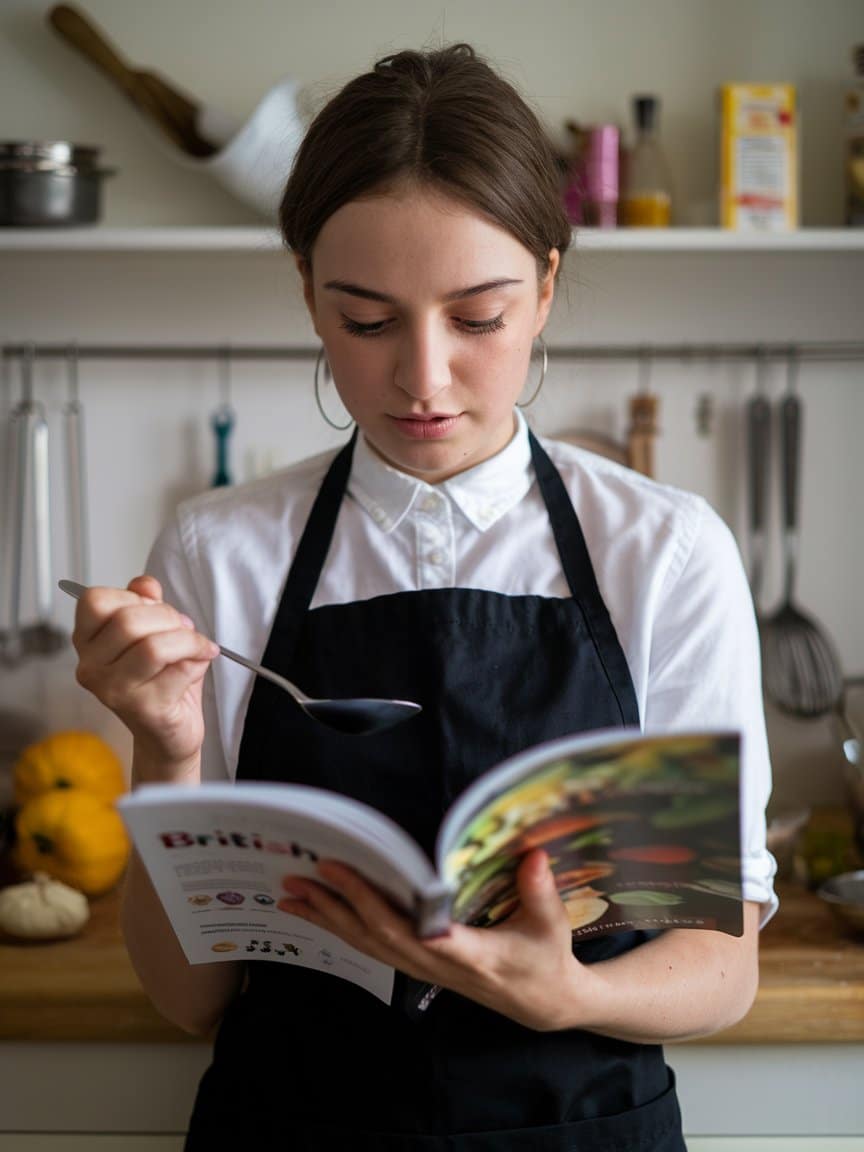There’s something about Carne con Papas that tugs at the heartstrings. It’s a dish that brings comfort, warmth, and memories. It’s the kind of meal that makes you feel at home, whether you’re in the bustling streets of Havana or tucked away in a cozy kitchen on the other side of the world. The moment that deep, savory aroma fills the air, you know something truly special is happening.
Carne con Papas, or “beef with potatoes,” is a classic Cuban dish. It’s simple, yet it carries the essence of Cuban home cooking: hearty, satisfying, and full of love. The beauty of this dish lies in its simplicity. With tender beef, flavorful vegetables, and a rich, comforting sauce, it’s everything you could want in a meal.
The best part? It’s a meal that doesn’t take hours to prepare. It’s rooted in tradition but still so versatile that you can make it your own. Today, let’s dive into this Cuban classic, learn about its history, and most importantly, uncover the secrets to making it truly unforgettable.
Ingredients & Substitutions Carne Con Papas
Let’s start with the basics. The core ingredients for Carne con Papas are pretty straightforward. The dish typically consists of beef (usually stewing cuts like chuck or flank), potatoes, onions, bell peppers, garlic, and a blend of spices and herbs that tie everything together. Tomatoes are often added, giving the sauce a rich depth. But there’s more to it than just these essentials.

Here’s a breakdown of the ingredients you’ll need:
- Beef (Chuck or Flank Steak): The beef is key to the dish, offering the tender, juicy texture that melts in your mouth. Chuck or flank are perfect because they hold up well in a stew without becoming tough. If you can’t find these cuts, any other stewing beef or even a leaner cut will do. Just make sure to cook it long enough to get that melt-in-your-mouth texture.
- Potatoes: The unsung hero. They soak up all those flavorful juices, turning into little sponges of goodness. Russets or Yukon Golds are great options for this dish—both have the right balance of texture and starchiness.
- Onions and Bell Peppers: These vegetables form the base of the aromatic flavor profile. Red or green bell peppers are common, but I’ve seen people swap them for yellow or orange for a slightly sweeter kick.
- Garlic: Garlic makes everything better. It’s one of the main flavor contributors here. Don’t skimp—use plenty.
- Tomatoes: I recommend fresh tomatoes if they’re in season, but canned tomatoes work perfectly well. The tomatoes bring a tangy balance to the dish, giving it that saucy goodness.
- Spices: Cuban cooking leans heavily on garlic, cumin, and oregano. These spices make the dish shine. If you want a little heat, a dash of cayenne can be great, too.
For substitutions, there’s room for creativity. If you’re looking to go gluten-free or need a dairy-free version, this recipe is naturally accommodating. You can swap the beef for chicken or even pork if that suits your tastes or dietary restrictions. If you prefer a vegetarian take, you can use hearty root vegetables and beans in place of meat.
Fresh herbs are always better than dried, but if dried is what you have, don’t be afraid to use them. Just adjust the quantity since dried herbs are more concentrated.
Step-by-Step Instructions Carne Con Papas

Now let’s break down the process. It’s simple, but there are a few tips that make all the difference.
Step 1: Prepare the Beef
Start by cutting your beef into bite-sized cubes. Season the meat generously with salt, pepper, and a bit of cumin. You want to develop a nice sear on each piece to build flavor. Heat some oil in a large pot over medium-high heat. Brown the beef in batches to avoid overcrowding. This step ensures you get that deep, caramelized crust that adds layers of flavor to the dish.
Step 2: Sauté the Vegetables
After the beef is browned, remove it from the pot and set it aside. In the same pot, add a bit more oil if necessary. Sauté your onions, bell peppers, and garlic until they’re soft and fragrant. This is where the flavor base comes together, so don’t rush it. Let the vegetables cook until they’re golden brown and starting to release their sweetness.
Step 3: Add the Tomatoes
Add the chopped tomatoes and cook them down for a few minutes until they start to break apart. If you’re using canned tomatoes, this step will only take a couple of minutes. Stir in your cumin, oregano, and a pinch of cayenne if you like it spicy.
Step 4: Combine the Beef and Potatoes
Add the browned beef back into the pot, followed by the potatoes. Toss everything together so the potatoes are well coated with the sauce. Pour in enough water to cover the ingredients and bring it to a boil.
Step 5: Simmer to Perfection
Once it’s boiling, reduce the heat to low and cover the pot. Let the dish simmer for about 1 to 1.5 hours, or until the beef is tender and the potatoes are cooked through. Stir occasionally to make sure everything is evenly cooking and nothing is sticking to the bottom. This slow cooking process is what makes the beef so tender and allows the flavors to meld together beautifully.
Cooking Techniques & Science
The technique of browning meat before stewing is crucial in building flavor. When beef is seared, the Maillard reaction occurs, which adds rich, complex flavors that wouldn’t be possible if the meat were simply boiled. You want that deep, caramelized flavor, so don’t rush the browning step. The key is high heat, a bit of oil, and patience.
As for the potatoes, their role in this dish is twofold: they’re both an ingredient and a natural thickener. As the potatoes cook and break down a little bit, they release starch, which thickens the sauce and gives it that comforting, hearty texture.
Finally, simmering the dish for an extended period allows all the flavors to concentrate. The beef becomes tender, the potatoes absorb all the savory goodness, and the sauce thickens into a rich, flavorful stew.
Serving & Pairing Suggestions Carne Con Papas

When it comes to serving Carne con Papas, you want to keep it simple. Serve it with a side of white rice to soak up all the delicious sauce. You can also add a slice of Cuban bread, if you want to get truly authentic, to mop up the juices.
For drinks, a light, crisp mojito would be perfect to balance out the richness of the dish. If you’re in the mood for something non-alcoholic, a refreshing agua de guanábana (soursop juice) would complement the meal beautifully.
Conclusion
Carne con Papas is more than just a meal; it’s an experience. It’s a dish that brings people together, reminds us of home, and celebrates the flavors of Cuba. Whether you’re cooking it for the first time or making it your go-to comfort food, there’s no wrong way to enjoy it.
Remember, the key to success is patience. Let the beef and potatoes cook slowly, and don’t rush the process. With a little time and care, you’ll have a dish that’s bursting with flavor, warmth, and nostalgia.
Frequently Asked Questions?
Q: Can I use chicken instead of beef in Carne con Papas?
A: Yes! Chicken thighs work particularly well. Just cook it for a bit less time, as chicken cooks faster than beef.
Q: How can I make the dish spicier?
A: If you want a spicier version, try adding some chopped jalapeños, or increase the amount of cayenne pepper to your taste.
Q: Can I freeze Carne con Papas?
A: Absolutely! This dish freezes very well. Let it cool completely before transferring it to an airtight container. It will keep in the freezer for up to three months.
Q: What’s the best way to store leftovers?
A: Store any leftovers in an airtight container in the fridge for up to three days. Reheat on the stove over low heat for best results.
Q: Can I make Carne con Papas in a slow cooker?
A: Definitely! Brown the beef and sauté the vegetables first, then transfer everything to a slow cooker. Cook on low for 6-8 hours, or until the beef is tender and the potatoes are soft.

Veronica is a passionate food enthusiast with over three years of experience in exploring and writing about diverse cuisines. Her expertise lies in reviewing restaurants, sharing creative recipes, and discovering the latest food trends. As the voice behind FoodieRecap.com, Anju brings fresh perspectives and culinary insights to her audience.
